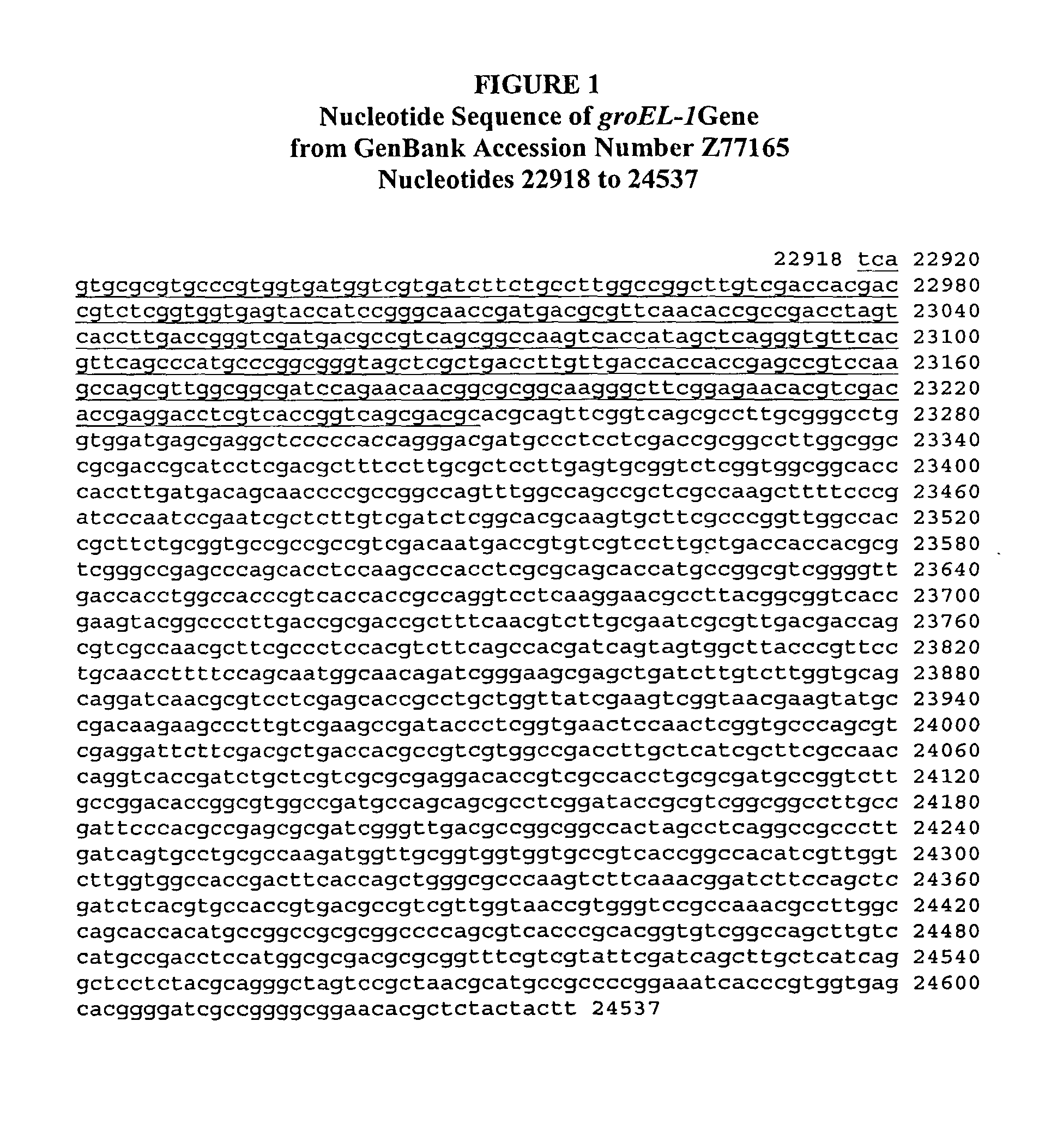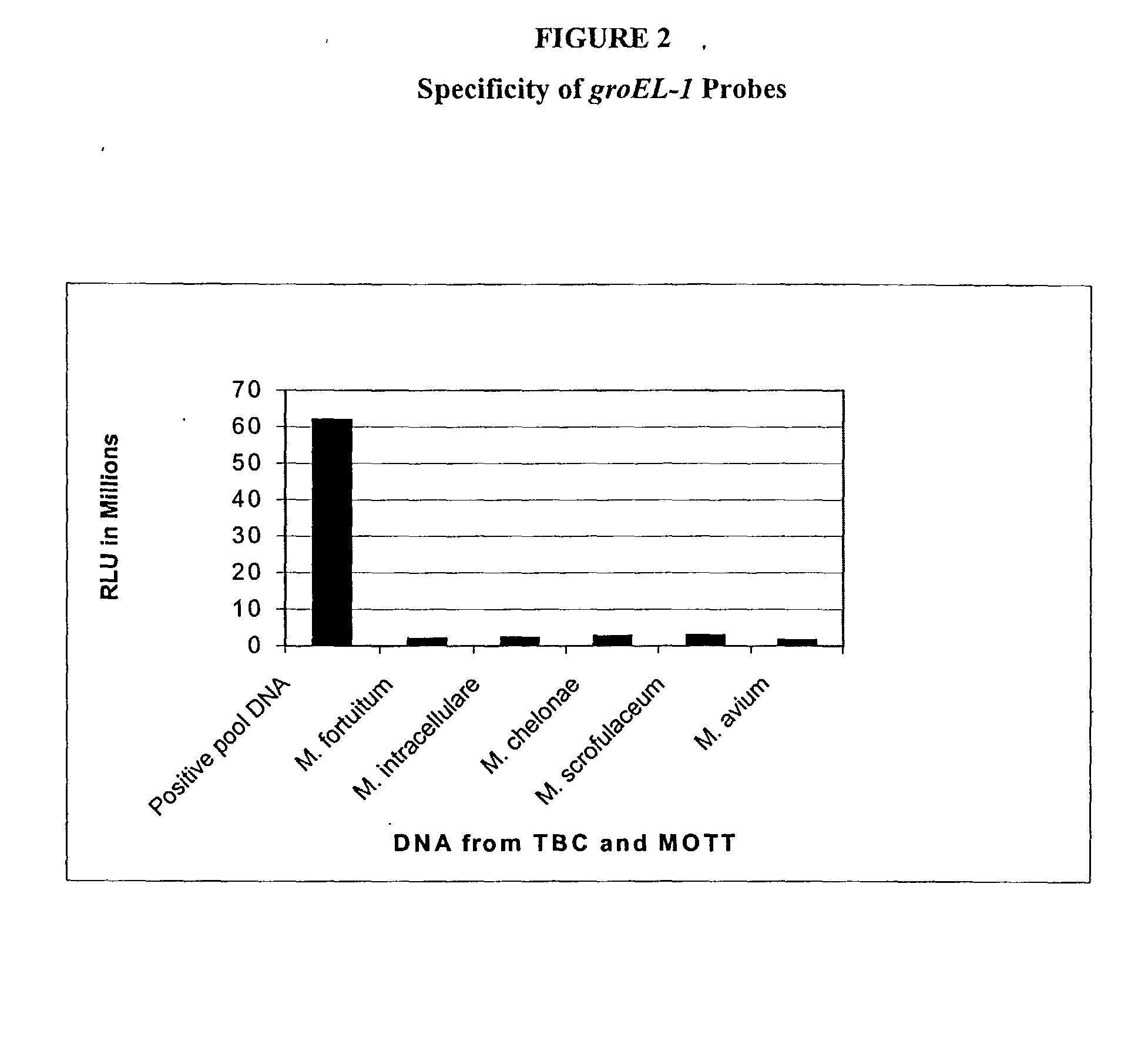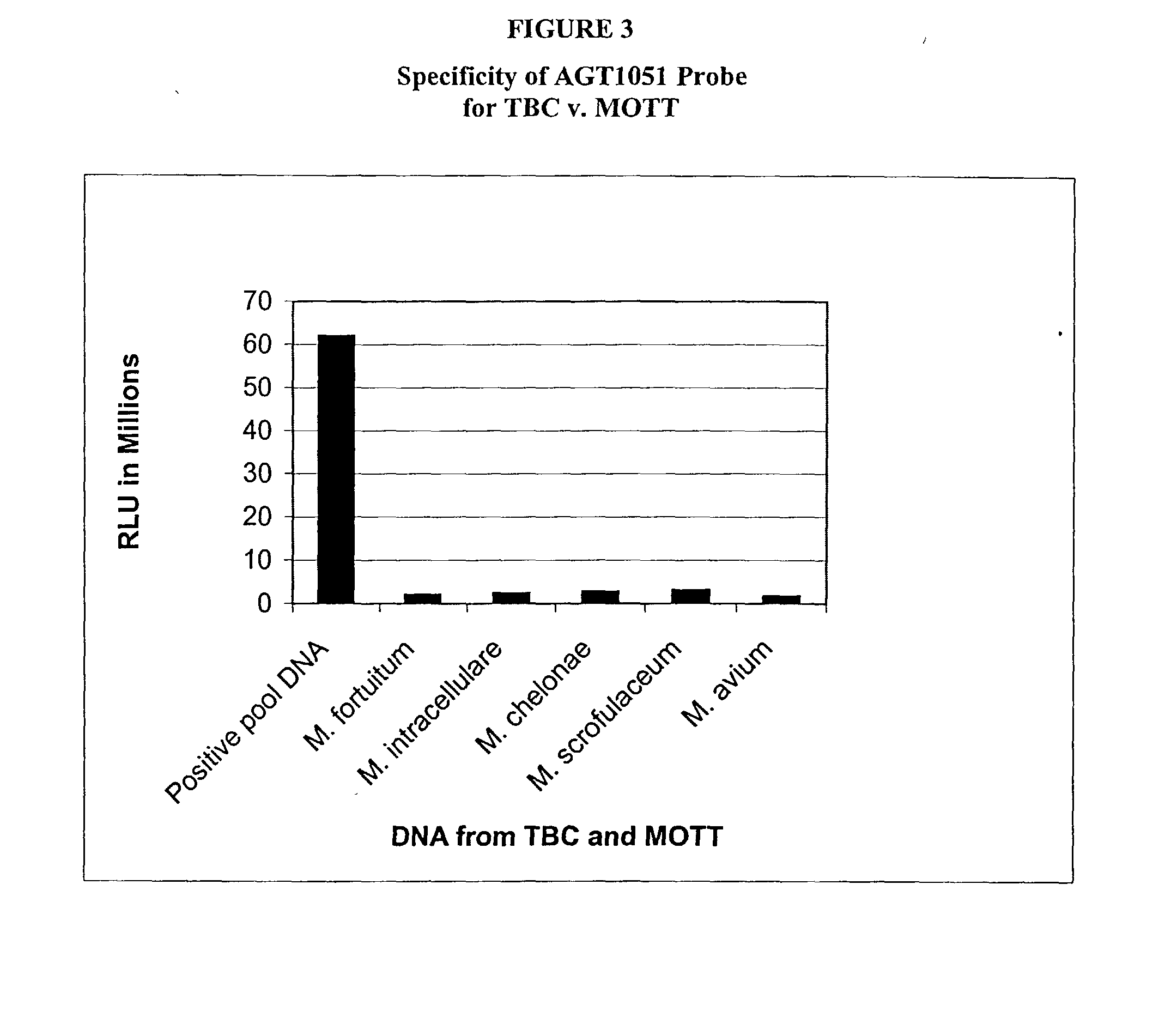Compositions and methods for detecting pathogenic bacteria expressing chaperonin proteins
a technology of chaperonin and proteins, applied in the field of compositions and methods for detecting pathogenic bacteria, can solve the problems of laborious detection methods, lack of reproducibility, and inability to achieve reproducibility,
- Summary
- Abstract
- Description
- Claims
- Application Information
AI Technical Summary
Benefits of technology
Problems solved by technology
Method used
Image
Examples
example 1
Selecting Probes for the Detection of TBC
[0112] Probes were designed that would hybridize with the TBC groEL-1 sequence (SEQ ID NO:1) with high specificity and sensitivity in a way to avoid false positive results. An exemplary sub-regions of the groEL-1 gene that appeared to be more conserved among the TBC was identified as a potential probe site, and is given by SEQ ID NO:2. All nucleic acid databases in GenBank were search using the BLASTN 2.1.3 program, available online at the NCBI web site. The databases were searched using the GenBank Accession No.Z77165 as a query sequence with either multiple or pair wise alignments, and with Expect Value at 10 (relatively more permissive) initially.
[0113] Searches were carried out at Expect Value 1 (relatively less permissive). The searches produced a region with significant Blast Hits to explore for designing the probes. This was the region between nucleotides 23,000 and 23,250 (SEQ ID NO:2) / Several scans of each of these regions were ana...
example 2
Demonstration of Specificity of Probes
[0117] The following example is to demonstrate specificity of the probes AGT1051, AGT1052 and AGT1053. The experiments were carried out by labeling genomic nucleic acid samples with a photo-chemically activatable compound. The labeled nucleic acid samples were then hybridized with the probes which were chemically immobilized to magnetic particles. The hybridized materials were detected by chemiluminescence of the label.
[0118] Clinical isolates were cultured from patients who were diagnosed with TB. Nucleic acids were isolated from the clinical isolates by lysing cells with Triton X-100 in a Tris-EDTA buffer. Further purification of the nucleic acids was carried out by phenol-chloroform extraction and ethanol precipitation. The precipitated DNA was dissolved in water (1 mg / ml). Similarly, DNA from M. chelonae was also prepared.
[0119] The labeling compound was synthesized by the methods described in Dattagupta et al., U.S. Pat. No. 6,242,188 B1...
example 3
PCR and Hybridization of Probes
[0122] Virtual PCR is conducted with any known software, e.g., Primer III (www.genome.wi.mit.edu). One set of primers for PCR is designed from the groEL-1 gene sequence. Sequences of the left-end and the right-end primers are 5′-CTTCTGCCTTGGCCGGCTTG-3′ (SEQ ID NO:15) and 5′-GCAAGGCGCTGACCGAACTG-3′ (SEQ ID NO:16), respectively. These primers are checked for self-dimerization and hairpin formation abilities using an online program such as Oligo Analyzer ver 2.5 (www.idtdna.com). An amplification reaction is set up with 10 μL of M. tuberculosis H37Rv (ATCC 27294) target DNA (10 pg / μL), 1.5 μL of primer (SEQ ID NO: 15, 10 pmol / μL), 1.5 uL of primer (SEQ ID NO: 16, 10 pmol / μL), 2 μL of 2.5 mM dNTP, 2.5 μL of 10× reaction buffer, and 0.2 uL of Taq DNA polymerase (5 U / μL) in a 25 μL of final mixture. PCR is carried out in a thermal cycler with the following conditions: 94° C. for 5 minutes followed by 28 cycles of [94° C. for 1 min, 65° C. for 1 min, 72° C. ...
PUM
| Property | Measurement | Unit |
|---|---|---|
| Tm | aaaaa | aaaaa |
| Tm | aaaaa | aaaaa |
| Tm | aaaaa | aaaaa |
Abstract
Description
Claims
Application Information
 Login to View More
Login to View More - R&D
- Intellectual Property
- Life Sciences
- Materials
- Tech Scout
- Unparalleled Data Quality
- Higher Quality Content
- 60% Fewer Hallucinations
Browse by: Latest US Patents, China's latest patents, Technical Efficacy Thesaurus, Application Domain, Technology Topic, Popular Technical Reports.
© 2025 PatSnap. All rights reserved.Legal|Privacy policy|Modern Slavery Act Transparency Statement|Sitemap|About US| Contact US: help@patsnap.com



